Scalp Cooling
Although scalp cooling provides the only real alternative to hair loss with the use of many breast cancer chemotherapy drugs, it has until now not been available to women in Victoria and Epworth Richmond is delighted to have recently acquired the first scalp cooling machine in Victoria.
Many women will lose their hair as a result of chemotherapy treatment for breast cancer and for some, this may be the most distressing side effect of treatment. “I didn’t mind losing my breast as much as I minded losing my hair” is a comment we hear commonly. Currently, very few units in Australia offer scalp cooling, although it is widely available in the UK and Europe, and we are extremely proud to be the first Victorian centre to offer scalp cooling to our breast cancer patients.
Although scalp cooling has been available for over 40 years, its use has been limited in the past. Older systems utilise packs of crushed ice and frozen gel caps. These have the disadvantages of being uncomfortable, heavy to wear and are applied to the scalp at an unbearable temperature of -25°C. Recent advances in technology have led to improved success with this measure in preventing hair loss associated with chemotherapy. The modern Paxman unit uses a small, refrigerated cooling system to pump a liquid coolant through a light silicone cap that is attached to the cooling system. Coolant passes through the cap, extracting heat from the scalp.
Scalp cooling works by lowering the temperature of the head and scalp immediately before, after and during the administration of chemotherapy Cancer chemotherapy affects rapidly dividing cells and at any given time, 90% of human hair follicles are in the actively dividing phase.. This causes vasoconstriction of blood vessels in the scalp, thereby leading to reduced blood flow to the hair follicles in the period of peak plasma concentration of the relevant chemotherapy agent. It is also postulated that reduced biochemical activity due to cooling makes hair follicles less vulnerable to the damage of chemotherapy agents, thus preventing or minimising the damage, meaning that hair loss is not inevitable.
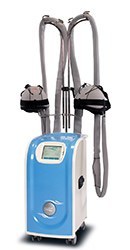
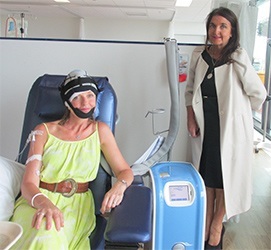
Breast cancer patient Robyn Moen wearing cool cap, with her breast surgeon Jane O’Brien
For scalp cooling to work, the scalp temperature needs to be kept low for the whole time the drugs are circulating in the blood. This means that the scalp needs to be cold for about 30 minutes before chemotherapy drugs are given, throughout the time chemotherapy is given (which may be up to 2 hours) and for up to 90 minutes afterward. If you are having your chemotherapy as an outpatient, you may need to spend up to three hours longer at the hospital for each treatment.
Scalp Cooling-Helps to Relieve the Visible Trauma of Cancer
Visible Trauma of Hair Loss
- Hair loss is a very visible sign of cancer chemotherapy treatment.
- Hair loss is seen as a constant reminder of the condition.
- Hair loss is regarded as a stigma by many.
Effect on Quality of Life
- Hair loss can cause negative changes in body image.
- Decreased social activities.
- Altered interpersonal relationships.
- These practical and emotional problems can result in a patient’s reluctance, even refusal, to accept cancer chemotherapy treatment.
The Benefits of Hair Loss Prevention
- Prevents the initial shock and trauma of losing hair and the emotional effect it has on the patient, their families, especially young children.
- Maintaining an outwardly ‘normal’ appearance.
- Maintaining a degree of choice and control with an element of your treatment – having the ability to control who knows about your illness, when everything else with regards to your treatment is taken out of your control.
- Being able to carry on with social activities without feeling like a cancer victim.
- Preserves self esteem and dignity, thereby maintaining a positive attitude towards treatments and cure.
- Not having to wear an uncomfortable wig or head scarf, which is particularly relevant because of our hot summer weather
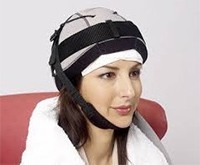
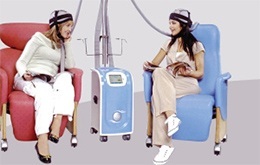
Typical Questions That May Be Asked By A Patient Before Having Scalp Cooling For The First Time
Q. Is it safe?
A. Yes, there are no side effects.
Q. Will it work for me?
A. There is a very good chance it will, but it cannot be guaranteed. It is important to understand that you may experience some hair loss. Success rates depend on many variable factors including the individual and the chemotherapy drugs being given.
Q. How cold will it be?
A. Cold at first, but not unbearable. It is much less noticeable after 10 – 15 minutes.
Q. Will it give me headache?
A. Generally not for most patients, but it does affect a small number.
Q. How long does the cap have to be worn?
A. 30 minutes before the start of your chemotherapy, during the period of receiving your chemotherapy and between 45 minutes and 3 hours after, but this is dependent on the chemotherapy drugs you are being given..
Q. Will the rest of my body feel cold?
A. This does not normally happen, but if it does, a blanket will be provided to keep you warm.
Q. Will I get frost bite?
A. No, precautions are taken to protect exposed areas of skin.
Q. What happens if I need to go to the bathroom?
A. The cap is quickly and easily disconnected from the system, and will keep the scalp at the desired temperature for up to 10 minutes without affecting the scalp cooling process.
Q. Are my movements restricted?
A. Patients can sit or recline in chairs, or lay down.
Q. Will I be able to read, fall asleep or have a drink?
A. Yes.
Scalp cooling has been demonstrated to be effective in at least 52% of patients, as defined by freedom from the need to wear a wig or head covering. A UK observational study reported an 89% success rate following use of the Paxman System in breast cancer patients, with only 11% with severe hair loss requiring wigs.
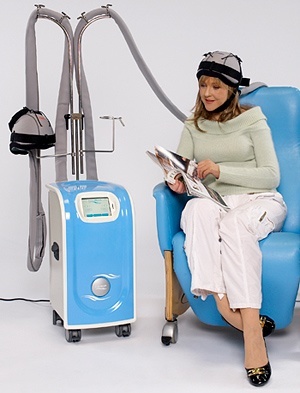
![]() Scalp Cooling Patient Brochure
Scalp Cooling Patient Brochure
![]() Hair Loss During Breast Cancer Treatment
Hair Loss During Breast Cancer Treatment
![]() The Post Scalp Cooling Haircare Guide
The Post Scalp Cooling Haircare Guide
![]() The Common-Sense Guide To Cold Cap Haircare (Hair Type 1-2)
The Common-Sense Guide To Cold Cap Haircare (Hair Type 1-2)
![]() The Common-Sense Guide To Cold Cap Haircare (Hair Type 3-4)
The Common-Sense Guide To Cold Cap Haircare (Hair Type 3-4)
![]() The Paxman Guide To Scalp Cooling
The Paxman Guide To Scalp Cooling
![]() Paxman Clinical Efficacy Study Brochure
Paxman Clinical Efficacy Study Brochure
You will need the Adobe Reader to view and print these documents.
![]()











